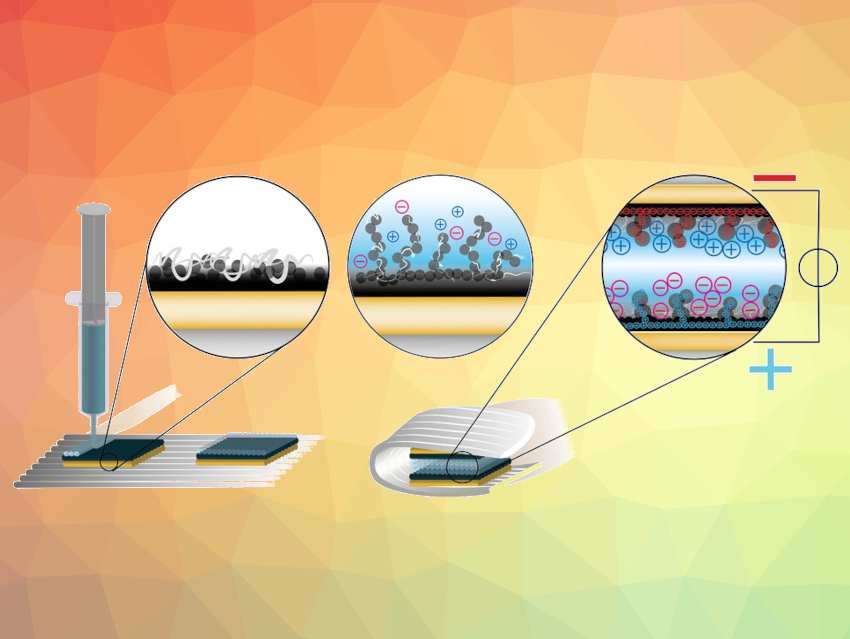Supercapacitors, or electrical-double-layer-capacitors (EDLCs), are an alternative to batteries. They can charge and discharge very fast, but usually have smaller capacities than batteries. Disposable supercapacitors made from nontoxic materials could be useful for environmentally friendly and disposable electronic devices.
Gustav Nyström, EMPA – Swiss Federal Laboratories for Materials Science and Technology, Dübendorf, and Swiss Federal Institute of Technology (ETH) Zurich, both Switzerland, and colleagues have developed a fully printed and disposable EDLC. The team manufactured the device by direct-ink-writing (DIW), a printing technique in which a gel ink is extruded line-by-line and layer-by-layer to form 3D objects. They printed two half cells composed of multiple different layers and then folded the substrate to bring them into contact and obtain the working device (pictured above).
The researchers used a substrate made from ink composed of cellulose nanofibrils (CNFs), cellulose nanocrystals (CNCs), and glycerol as the base layer. The ink for the current collector contained graphite, carbon-black, and shellac. The electrode ink contained CNFs, CNCs, glycerol, activated carbon, and graphite particles. The ink for the electrolyte contained CNCs, glycerol, and NaCl. These materials were printed on top of each other onto the substrate.
The resulting devices maintain a high capacitance of 25.6 F g−1 active material at an operating voltage up to 1.2 V. They can, thus, drive low-power electronics. The capacitors exhibit excellent shelf- and cycle stability and can operate over a broad range of temperatures. At the end of its service life, the EDLC can be composted and disintegrates within weeks. The device could have applications, e.g., in environmental sensing, e-textiles, and healthcare.
- Fully 3D Printed and Disposable Paper Supercapacitors,
Xavier Aeby, Alexandre Poulin, Gilberto Siqueira, Michael K. Hausmann, Gustav Nyström,
Adv. Mater. 2021.
https://doi.org/10.1002/adma.202101328



